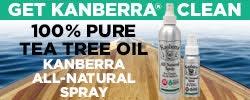CURRENT LOCAL NOTICES TO MARINERS
Here are the latest Local Notices to Mariners and NAV ALERTS that are relevant to ICW cruising in Districts 5, 7 and 8, the OBX, AICW, OWW, Keys, GIWW and adjacent waters. Open each LNM link for the USCG notice and a chart for each location. Listed north to south to north. NAV ALERTS will also be posted on our Homepage.
For previous Local Notices, go to the Specific State or Region on our Homepage
Week 52/25
LNM: Off AIWW, Oregon Inlet Channel Lighted Buoy 27 Offstation
LNM: Off AIWW-DismalSwamp, Chesapeake Bay Southern Approach Lighted Buoy 10 Extinguished
LNM: GIWW-West MM:644.0, Arroyo Colorado Cutoff Channel Junction Buoy N Missing
LNM: AIWW MM:786.8, Matanzas River Light 45 Partially Submerged
LNM: GIWW-West MM:675.4, Brownsville Channel Light 42 Extinguished
LNM: Off GIWW-East MM:378.1, Carrabelle River Daybeacon 17 Set TRUB
LNM: AIWW MM:257.3, New River – Cape Fear River Light 49 Destroyed
LNM: Off GIWW-East MM:184.2, Pensacola Bay Lighted Buoy 23 Improper Characteristics
LNM: GIWW MM:2.1, Pine Island Sound Buoy 7 Offstation
Week 51/25
LNM: Off GIWW-East MM:378.1, Carrabelle River Daybeacon 17 Missing
LNM: AIWW MM:257.3, New River – Cape Fear River Light 49 Missing
LNM: AIWW MM:300.8, Upper Midnight Channel South Range Rear Light Extinguished
LNM: Off AIWW MM:154.1, Eastham Creek Daybeacon 9 Destroyed
LNM: Off AIWW MM:154.1, Eastham Creek Daybeacon 9 Destroyed
LNM: Off WW, Phoebus Channel Daybeacon 4 Missing
LNM: AIWW MM:326.7, Cape Fear River – Little River Daybeacon 63 Destroyed
LNM: Off AIWW, St Marys Entrance Lighted Buoy 8 Extinguished
LNM: Off GIWW-West, Tule Lake Channel E Range Rear Light Damage to Range Boards
LNM: Off GIWW-West MM:537.8, La Quinta Channel Inner Range Rear Light Missing
LNM: AIWW MM:281.3, New River – Cape Fear River Daybeacon 124 Set TRUB
LNM: Hazardous Weather Outlook for the Western Atlantic
LNM: AIWW MM:988.1, Great Pocket Light 3 Missing
LNM: Off AIWW, Big Foot Slough Channel Lighted Buoy 9C Offstation
LNM: AIWW MM:264.7, New River – Cape Fear River Daybeacon 92 Set TRLB
LNM: *** AUTO INSERT *** Off AIWW, Thimble Shoal Lighted Buoy 11 Not Showing Proper Characteristics
LNM: Off WW, Hatteras Connector Buoy 10 Missing
LNM: AIWW MM:1,032.1, Lake Worth South Light 41 Damaged Dayboard
NAV ALERT: LNM: AICW MM 5.8, Emergency Bridge Deviations UPDATE, Dec 15-19, Gilmerton Hwy Bridge, VA
Week 50/25
LNM: AIWW MM:264.7, New River – Cape Fear River Daybeacon 92 Destroyed
LNM: Off GIWW-East MM:133.5, Mobile Channel Lighted Buoy 28 Relocated
LNM: Off GIWW-East MM:133.4, Mobile Channel Lighted Buoy 27 Relocated
LNM: GIWW-East MM:133.6, Mobile Channel Lighted Buoy 26 Relocated
LNM: Off GIWW-East MM:133.7, Mobile Channel Lighted Buoy 21 Relocated
LNM: Off GIWW-East MM:133.8, Mobile Channel Lighted Buoy 22 Relocated
LNM: Off GIWW-East MM:134.1, Mobile Bar Lighted Buoy 20 Relocated
LNM: Off GIWW-East MM:133.9, Mobile Bar Lighted Buoy 19 Relocated
LNM: Off GIWW-East MM:134.2, Mobile Bar Lighted Buoy 17 Relocated
LNM: Off GIWW-East MM:134.2, Mobile Bar Lighted Buoy 13 Relocated
LNM: Off GIWW-East MM:134.2, Mobile Bar Lighted Buoy 15 Relocated
LNM: Off GIWW-East MM:134.1, Mobile Bar Lighted Buoy 11
LNM: Off GIWW-East MM:134.2, Mobile Bar Lighted Buoy 9 Relocated
LNM: Off GIWW-East MM:134.1, Mobile Bar Lighted Buoy 7 Relocated
LNM: Off GIWW-East MM:134.1, Mobile Bar Lighted Buoy 5 Relocated
LNM: Off GIWW-East MM:134.0, Mobile Bar Lighted Buoy 3 Relocated
LNM: Off GIWW-East MM:133.9, Mobile Bar Lighted Buoy 1 Relocated
LNM: AIWW MM:1,016.6, Lake Worth North Light 34 Improper Characteristics
LNM: Off GIWW-East MM:133.5, Mobile Channel Lighted Buoy 28 Relocated
LNM: Off GIWW-East MM:133.4, Mobile Channel Lighted Buoy 27 Relocated
LNM: GIWW-East MM:133.6, Mobile Channel Lighted Buoy 26 Relocated
LNM: GIWW-East MM:133.5, Mobile Channel Lighted Buoy 25 Relocated
LNM: GIWW-East MM:133.7, Mobile Channel Lighted Buoy 24 Relocated
LNM: GIWW-East MM:133.6, Mobile Channel Lighted Buoy 23 Relocated
LNM: Off GIWW-East MM:133.8, Mobile Channel Lighted Buoy 22 Relocated
LNM: Off GIWW-East MM:133.8, Mobile Channel Lighted Buoy 22 Relocated
LNM: Off GIWW-East MM:133.9, Mobile Bar Lighted Buoy 1 Relocated
LNM: Off GIWW-East MM:133.9, Mobile Bar Lighted Buoy 19 Relocated
LNM: Off GIWW-East MM:134.2, Mobile Bar Lighted Buoy 17 Relocated
LNM: Off GIWW-East MM:134.2, Mobile Bar Lighted Buoy 15 Relocated
LNM: Off GIWW-East MM:134.2, Mobile Bar Lighted Buoy 13 Relocated
LNM: Off GIWW-East MM:134.1, Mobile Bar Lighted Buoy 11 Relocated
LNM: Off GIWW-East MM:134.2, Mobile Bar Lighted Buoy 9 Relocated
LNM: Off GIWW-East MM:134.1, Mobile Bar Lighted Buoy 7 Relocated
LNM: Off GIWW-East MM:134.1, Mobile Bar Lighted Buoy 5 Relocated
LNM: Off GIWW-East MM:134.0, Mobile Bar Lighted Buoy 3 Relocated
LNM: ff GIWW-East MM:133.9, Mobile Bar Lighted Buoy 1 Relocated
LNM: AIWW MM:1,150.7, Ramshorn Shoal Daybeacon 68 Extinguished
Week 47/25
LNM: Off AIWW, Chincoteague Inlet Lighted Buoy 8A Temporarily Discontinued
Week 09/25
FWC Commissioners approve new rule establishing boating restricted area in Jupiter Narrows
Week 39/23
LNM: Alt ICW MM 7, Long Term Deep Creek Bridge Replacement, Dismal Swamp Canal, NC
For previous Local Notices, go to the Specific State or Region on our Homepage
















Be the first to comment!